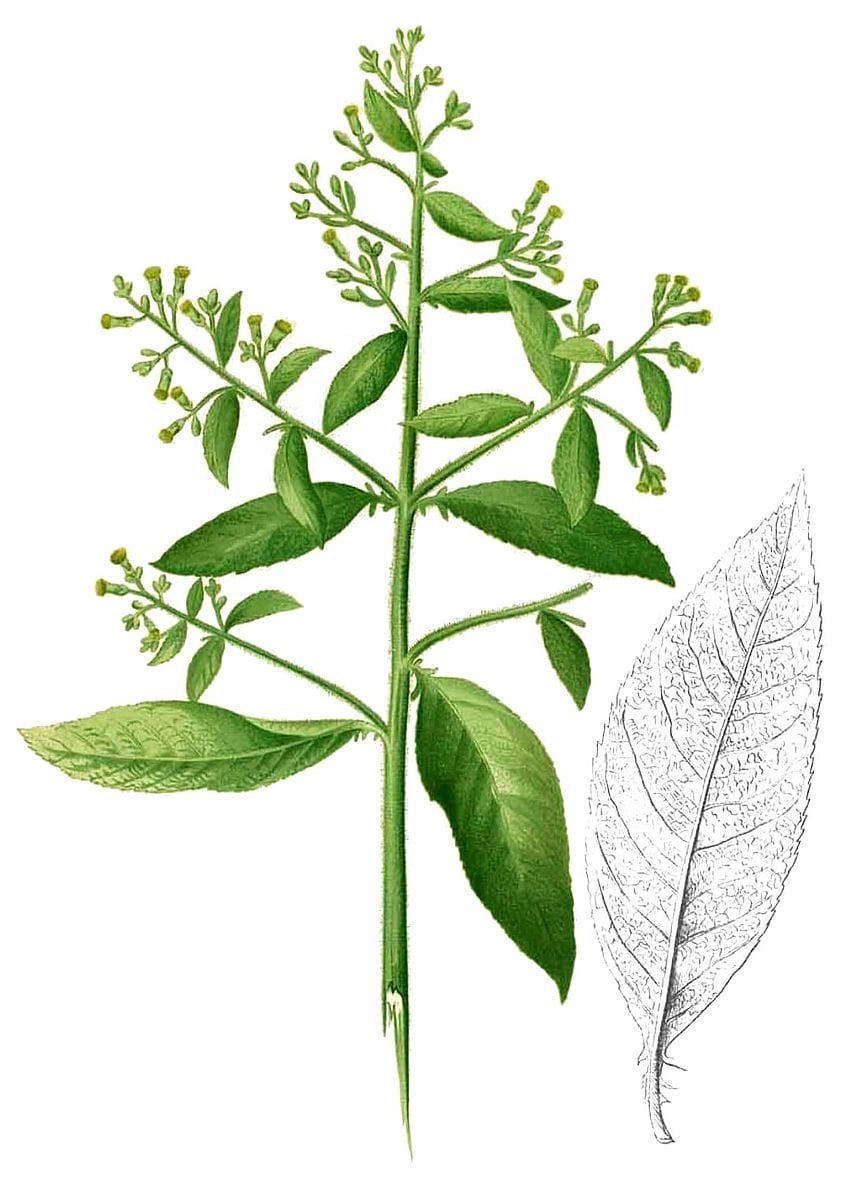Blumea balsamifera, Ai Na Xiang 艾纳香
Balsamiferous BlumeaAi Na Xiang, Bing Pian Ai, Da Feng Ai (TCM)
 Blumea balsamifera
Blumea balsamiferaBlanco, M., Flora de Filipinas, ed. 3 (1877-1883)
Botanical name:
Blumea balsamifera (syn. B. densiflora)
Parts used:
Leaf; also the root
Note this is a source of Nagi Camphor.
Temperature & Taste:
Warm, dry. Pungent, slightly Bitter
Uses:
1. Clears Wind and Damp:
-Wind-Damp pain, Rheumatism
-Wind-Damp type Eczema (weeping)
2. Warms the Stomach, Stops Diarrhea:
-Diarrhea and Dysentery from Cold and Damp
-Hyperacidity from Damp
-has an anti-obesity effect
3. Moves the Blood, Clears Stasis, Eases Pain:
-Dysmenorrhea
-Trauma, Bruising
-Postpartum Pain
-also for Hypertension and Insomnia
4. Clears Wind-Cold, Resists Poison:
-Wind-Cold Cold and Flu
-Malaria (Myanmar)
-Cough
-Boils, Carbuncle (topically)
-Food Poisoning
-Snake Bite
Dose:
Powder: 1–4 grams
Decoction: 15–30 grams fresh
Expressed Juice: 2–4mls (20–60ml doses for Malaria)
Crushed fresh leaf is applied to joint pain and arthritis, boils, bruising and inflammations, bites etc.
Comment:
The leaves are distilled as a source of Nagi Camphor, used as a source of Borneo Camphor oil. The essential oil is almost pure l-borneol.
Main Combinations:
1. Food Poisoning, Indigestion, the leaf ash is taken with Lemon juice and Salt.
2. Rheumatoid Arthritis, Blumea leaf with Spatholobus Ji Xue Teng
3. Dysmenorrhea, Blumea leaf, Motherwort (Yi Mu Cao)
4. Impetigo, Eczema, Blumea leaf, Sophora Ku Shen, Schizonepeta Jing Jie, Dictmanus Bai Xian Pi, Gardenia Zhi Zi
Major Formulas:
Cautions:
None noted
Main Preparations used:
Borneo Camphor
